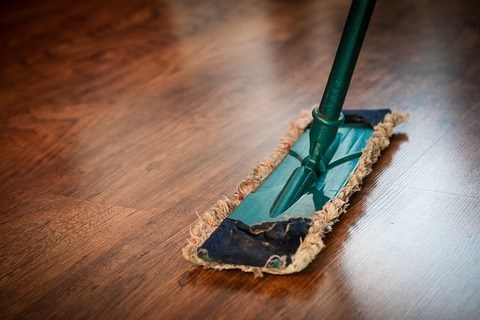Landlord and tenant disputes over damage and wear & tear to rental properties are often the source of heated disagreements.
Rows erupt over the fairness of not returning deposits and who is responsible for paying for the costs of repairs.
Resolving these disagreements comes down to applying the rules of betterment – a way of calculating who should pay – and how much.
The rules of betterment clearly explain a landlord should not be at a financial advantage or disadvantage at the end of a tenancy allowing for fair wear and tear of a rented home.
Fair wear and tear depends on the tenancy.
For instance, a home rented by a pensioner is likely to suffer far less wear and tear than one rented by a family with young children or pets.
The next point to consider is the best way of putting right any damage that is more than fair wear and tear.
Low cost cleaning or repair
This could be cleaning a stain on a rug rather than replacing the item. However, if the landlord replaces the rug and deducts the cost from the deposit, this would be betterment rather than a repair.
In this case, the landlord should split the cost – charging the tenant a fair cost for the repair but paying for the rest of the replacement charge.
The way to do this is to ask for quotes for removing the stain from two or three cleaning firms and charging the tenant the cheapest.
Copies of the quotes should be supplied to the tenant before replacing the rug.
The cost should then be deducted from any deposit.
Fair cost of replacement
Sometimes, cleaning or a repair is not worthwhile for the landlord, but charging the tenant the replacement cost is unfair.
Take a fitted carpet that has seen the best years of wear with a stain that needs cleaning.
Apportioning the cost is the fairest way to charge the tenant.
This formula takes into account the value and lifespan of the asset and splits the purchase cost over the lifespan.
The figure input as the expected life of the asset should reflect the degree of wear and tear relating to the tenancy.
Adjust the figure up for low wear and tear or down for high traffic.
Here is a worked example showing how the formula works:
Betterment Formula
| A | Replacement cost of carpet | £750 |
| B | Age of carpet | 5 years |
| C | Expected life of asset | 15 years |
| D | Expected time before renewal of carpet (C – B) | 10 years |
| E | Annual depreciation (A / C) | £50 |
| F | Apportioned cost to tenant (D x E) | £500 |
The principle is the tenant should only pay a fair cost of cleaning or replacing an asset that is proportionate to the time they spend in the home.
Back up the calculation with a copy of the original purchase invoice and an explanation of how the expected life of the asset was calculated.





Can a landlord exclude fair wear and tear in an agreement ? For example renting a brand new property for the first time insist that it is restored “as new” at the end of the tenancy ?
No, a tenant is always entitled to fair wear and tear and such a clause would be regarded as unfair under the Consumer Rights Act 2015 and unenforceable.
Can a tenant ever claim that glass breakage is wear and tear? ie toughened glass affixed to the wall behind the cooker, now broken. The glass has been in place more than 3 years.
This is one of those difficult judgment calls with no particular answer.
We had a case with a built in oven. They said the door (which was pull downwards, not sideways opening) dropped at speed and the glass broke. It was obvious this is not what happened but in fact the door was open and they dropped something on the open door (like a pan or something).
However, it was impossible to prove so we just put in a new oven (which was quicker and easier than replacing the glass).
Your case is very similar.
The only thing we would add, with our case, due to the door being open it was obvious how easy it was to drop something on it and break. With yours though, it would be much harder to break the glass themselves with it being at the back of the cooker. Presumably they would have had to physically hit it with something. It’s also possible (however unlikely) that heat from the cooker could crack the glass. It would generally need to be heat proof not just toughened.
Beyond that, it’s impossible to know whether they caused the damage or not and without proof that they physically caused the damage might be something a landlord would need to replace.